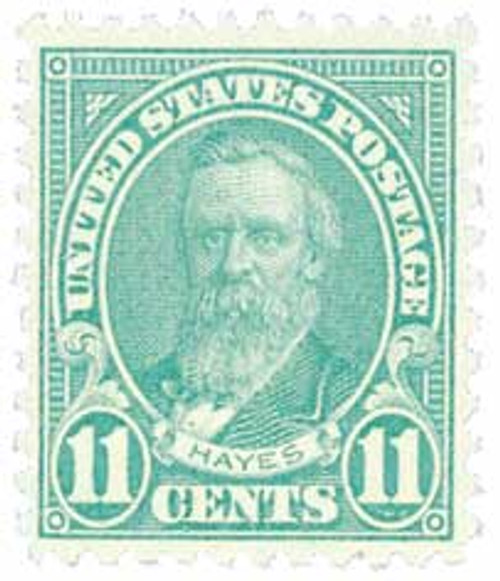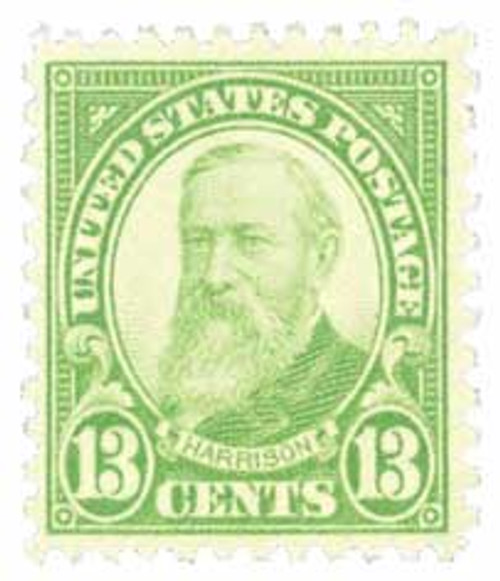
1931 30c Bison, brown
# 700 - 1931 30c Bison, brown
$0.45 - $3,525.00
U.S. #700
1931 30¢ Bison
Rotary Press
1931 30¢ Bison
Rotary Press
Issue Date: September 8, 1931
First City: Washington, DC
The American Buffalo (Bison)
The American buffalo is the largest land animal in North America. Massive herds of buffalo, more accurately known as bison, once roamed between the Appalachian Mountains and the Rocky Mountains. Many American Indian groups developed lifestyles that revolved around hunting these large animals, which can weigh up to 3,000 pounds.
Estimates of pre-European numbers of buffalo in America range from 30-70 million. About 20 million buffalo lived on the western plains in 1850. White hunters began to wipe out the buffalo herds, and by 1889, only 551 buffalo could be found in the entire U.S. “Buffalo” Bill Cody alone killed more than 4,000 buffalo in just two years. Great efforts were made to help the animal recover. In 2000, the number of bison had been restored to over 350,000.
The Most Perfect U.S. Stamps?
Issued as the U.S. spiraled into the Great Depression, the beautifully engraved Series of 1926-31 captures the spirit of America – the wisdom of our greatest leaders, the power of the majestic Niagara Falls, and the romance of the Wild West. This achievement is even more impressive when one considers the limitations the Bureau of Engraving and Printing worked with during the worldwide Depression.
“This series of definitive stamps represents, if not perfection, then at least a high degree of achievement by the Bureau of Engraving and Printing.” – Noted philatelic author Gary Griffith
The Series of 1926-31 features the historic designs and patriotic symbolism of the Series of 1922. However, the new series was printed on a rotary intaglio press, saving time and money as it was printed in continuous rolls. The rolls were then threaded into a perforator, pulled through the machine under high tension, and perforated horizontally and vertically in a single step. A 10-gauge perforation had been the standard used to prevent the paper from tearing during production. To overcome complaints that stamps perforated 10 gauge were hard to separate, a quantity of the 2¢ stamps (U.S. #634, the first Series of 1926-31 denomination to be issued) were given experimental perforations of 11 x 101/2.
The experiment was a success – the stamps were sturdy enough to withstand the production process yet easy to separate for postal use. The Bureau of Engraving and Printing applied the compound perforations to the entire Series of 1926-31. In fact, the compound perforation stamps were so successful the format was used for the next 10 years, including the 1938 Presidential and 1954 Liberty Series.
U.S. #700
1931 30¢ Bison
Rotary Press
1931 30¢ Bison
Rotary Press
Issue Date: September 8, 1931
First City: Washington, DC
The American Buffalo (Bison)
The American buffalo is the largest land animal in North America. Massive herds of buffalo, more accurately known as bison, once roamed between the Appalachian Mountains and the Rocky Mountains. Many American Indian groups developed lifestyles that revolved around hunting these large animals, which can weigh up to 3,000 pounds.
Estimates of pre-European numbers of buffalo in America range from 30-70 million. About 20 million buffalo lived on the western plains in 1850. White hunters began to wipe out the buffalo herds, and by 1889, only 551 buffalo could be found in the entire U.S. “Buffalo” Bill Cody alone killed more than 4,000 buffalo in just two years. Great efforts were made to help the animal recover. In 2000, the number of bison had been restored to over 350,000.
The Most Perfect U.S. Stamps?
Issued as the U.S. spiraled into the Great Depression, the beautifully engraved Series of 1926-31 captures the spirit of America – the wisdom of our greatest leaders, the power of the majestic Niagara Falls, and the romance of the Wild West. This achievement is even more impressive when one considers the limitations the Bureau of Engraving and Printing worked with during the worldwide Depression.
“This series of definitive stamps represents, if not perfection, then at least a high degree of achievement by the Bureau of Engraving and Printing.” – Noted philatelic author Gary Griffith
The Series of 1926-31 features the historic designs and patriotic symbolism of the Series of 1922. However, the new series was printed on a rotary intaglio press, saving time and money as it was printed in continuous rolls. The rolls were then threaded into a perforator, pulled through the machine under high tension, and perforated horizontally and vertically in a single step. A 10-gauge perforation had been the standard used to prevent the paper from tearing during production. To overcome complaints that stamps perforated 10 gauge were hard to separate, a quantity of the 2¢ stamps (U.S. #634, the first Series of 1926-31 denomination to be issued) were given experimental perforations of 11 x 101/2.
The experiment was a success – the stamps were sturdy enough to withstand the production process yet easy to separate for postal use. The Bureau of Engraving and Printing applied the compound perforations to the entire Series of 1926-31. In fact, the compound perforation stamps were so successful the format was used for the next 10 years, including the 1938 Presidential and 1954 Liberty Series.



















